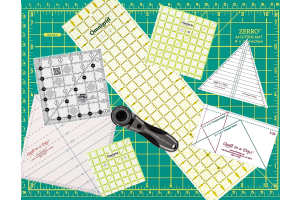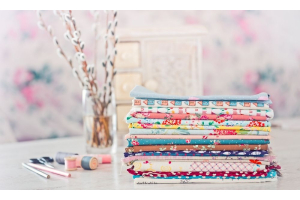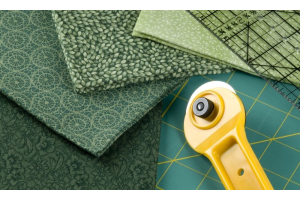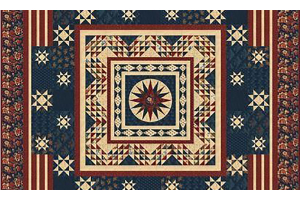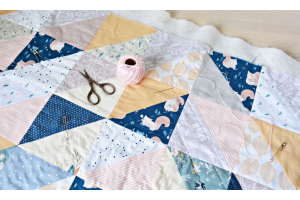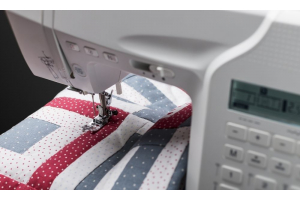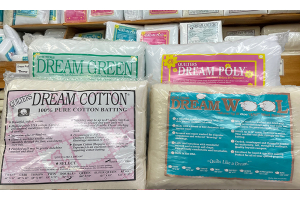How to Properly Launder and Care For Your Quilt

Your handmade quilt is a masterpiece that deserves special treatment—but don’t be afraid to wash it. Quilts are meant for you to use and enjoy! In general, washing a quilt less frequently will extend its life, and most quilts don’t need washing more than once or twice a year. Of course, kids’ quilts or quilts in a home with pets will probably need more frequent care. Learn how to properly launder and care for your quilt so that you can enjoy it for years to come.
Check for Any Needed Repairs
Before washing your quilt, check for fraying threads or ripped seams. Repair those first. When washing for the first time, verify that your quilt is color-fast by wetting a white cloth with cold water and rubbing each area. If you find any bleeding, you can add Shout Color Catchers or Retayne to the wash to prevent bleeding.
Machine Washing Quilts
You can safely wash new machine-sewn and quilted quilts in your washing machine. Avoid machine washing antique, hand-sewn, hand-quilted, or hand-appliqued quilts.
You’ll need:
- Mild detergent. We recommend using an unscented mild detergent. Do not use fabric softeners or any product containing bleach.
- Color fixative. If you’re worried about your colors bleeding, a product like Retayne can help lock in the dyes.
- Color catchers. Use Shout Color Catchers in the washing machine the first few times you wash your quilt to catch any dye that might bleed in the water.
Then follow these steps for best results:
- Wash your quilt in cold water on the gentle cycle.
- Use a large load setting so that the quilt is in plenty of water.
- Do NOT wash anything else with your quilt.
- If you have a large quilt that is too big for your washing machine, you may need to go to a laundromat.
Handwashing Quilts
When washing an antique, hand-sewn, or hand-quilted quilt, hand-wash it following this procedure:
- Fill the bathtub.
Any large basin will work, but we’ve found that a clean bathtub is best. Rinse the tub to make sure it is clean. Mix some perfume-free, dye-free, gentle detergent into cold water, or use a soak specifically made for quilts.
- Swirl and soak.
Submerge and swish your quilt around, then let it soak for 10 minutes. Drain the tub, and fill it again using cold water. Rinse and repeat a few times until all the soap is gone from the quilt and the water.
- Transport gently.
A wet quilt is heavy. You’ll need a plan. Put a white sheet under the quilt in the washing machine or tub, and haul it up like a sling.
- Squeeze out excess water.
A buddy can help squeeze out the water. No twisting! Layer towels on the (clean) floor, and transfer the quilt there. Cover it with more towels, and roll it to absorb wetness.
Drying Your Quilt
When drying your quilt, you want to avoid heat. You can dry it in your dryer with very low or no heat, or you can lay your quilt flat to dry.
Using a Dryer
When drying your quilt, choose a setting for air fluff or low heat. This will minimize shrinkage and prevent melting polyester batting or threads. Take your quilt out of the dryer while it is still damp, and then lay it flat to dry on a layer of clean towels.
Air Drying
Place your wet or damp quilt on a layer of clean, dry towels. You can do this outdoors in the shade, but you’ll want to protect your quilt with a clean sheet on top to prevent anything from falling onto it. While it’s tempting to hang it from a clothesline, doing so can put too much strain on the seams—especially if it is an heirloom or hand-stitched quilt. Keeping it flat is the safest bet.
Learning to properly launder and care for your quilt is time well spent so that you can enjoy your quilt without worry. At Patchwork Plus, we have designs, expertise, and ready-to-go projects like bed quilts and baby quilt kits for sale. Check our site for inspiration.
I would hand wash as described above. If there are stains that don't come out, you can try a product called Retro Clean that does a great job removing old yellow or brown stains. If there is a specific stain you can also create a paste of Oxi Clean and Water and use a tooth brush to apply that to the stain. After working it in well make sure you rinse clean. While trying to remove stains make sure that you use cold water and hang to dry - heat will only tend to set a stain.
Let us know how this works!


